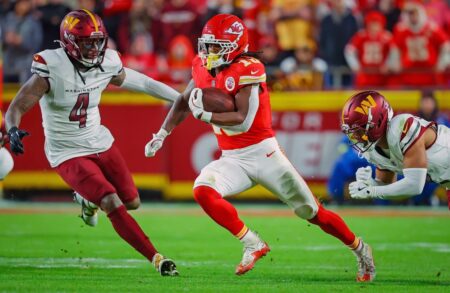The Los Angeles Dodgers, facing elimination in Game 6 of the World Series, instead survived to force a Game 7 Saturday at Rogers Centre in Toronto. But it took a bizarre umpires’ ruling to do it, a ruling that apparently did not violate the major league rule book, even if it did defy common sense.
The Toronto Blue Jays did not help their own cause after the ruling, allowing Dodgers righty Tyler Glasnow, making only his second relief appearance since 2018, to escape the bottom of the ninth with his first career save by getting three outs on just three pitches.
But the two abysmal at-bats by Ernie Clement and Andrés Giménez — the Blue Jays’ eighth and ninth hitters in the batting order — as well as stunning baserunning blunder by No. 7 hitter Addison Barger may never have happened if not for the preceding play when a line drive to the wall by Barger off of Dodgers right-handed reliever Roki Sasaki was ruled to be a ground-rule double and, as a result, a dead ball, wiping two Blue Jays runs off the board and reversing what initially appeared to be an inside-the-park home run by the Toronto right fielder.
Barger’s line drive landed at the base of the Rogers Centre wall in left-center field. Dodgers center fielder Justin Dean, who had entered the game at the start of the inning as a defensive replacement for Tommy Edman, alertly put his hand in the air, signaling that the ball was unplayable, causing the umpires to rule the ball dead.
Pinch runner Myles Straw, who had crossed the plate from first base, was sent back to third base. Barger, who followed behind Straw with the seeming inside-the-park round-tripper, was returned to second.
Dodgers manager Dave Roberts then replaced Sasaki with Glasnow. Clement swung at the first pitch from Glasnow, a high inside fastball well out of the strike zone, popping out to first base.
More MLB: Dodgers Mookie Betts Makes Blunt Confession After Game 5 Defeat
Giménez, after taking a first-pitch curve for a ball, swung at the second offering from the Dodgers’ 30-year-old righty — an inside sinker which also appeared to miss the plate — blooping the ball to charging left fielder Kiké Hernandez, who recorded the out.
But even though Straw was holding at third, Barger, for some reason, was caught halfway between the bases and doubled off to end the game.
“I was pretty surprised he got to it. Off the bat, I thought it was going to go over the shortstop’s head,” Barger explained later, as quoted by ESPN reporter Jesse Rogers. “I didn’t think it was going to travel that far. It was kind of a bad read.”
But what about the “dead ball” call that set up the wild, game-ending sequence? The ball was clearly visible and could have easily been retrieved by Dean, who chose instead to throw up his hands, so the ruling seemed at least at first glance to make no sense.
But according to MLB rules, “If a fair ball gets lodged in the outfield wall padding — or the ivy, in the case of Wrigley Field — it is a ground-rule double. On all ground-rule doubles, the ball is dead, the batter-runner goes to second and all additional runners are permitted to move up two bases from the one they occupied at the time of the pitch.”
By the strict reading of the rule, it appears that the umpires’ decision, despite appearances, was the correct one. Whether the ball was actually “lodged” in the padding remains open to interpretation.
More MLB: Umpire’s Second Game-Changing Call of Postseason Mars Game 3, Fans Claim
Read the full article here














